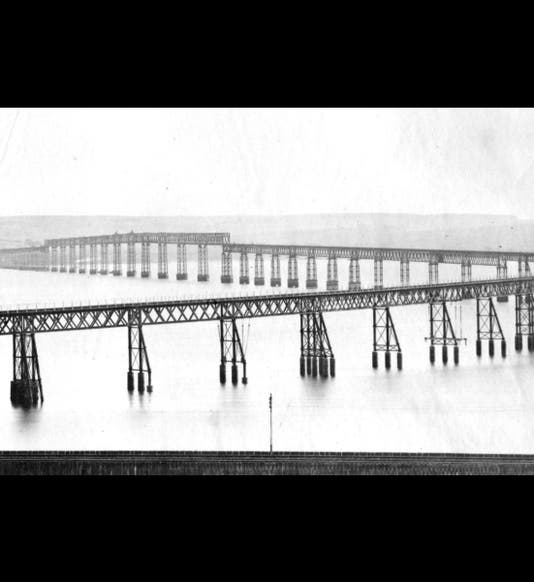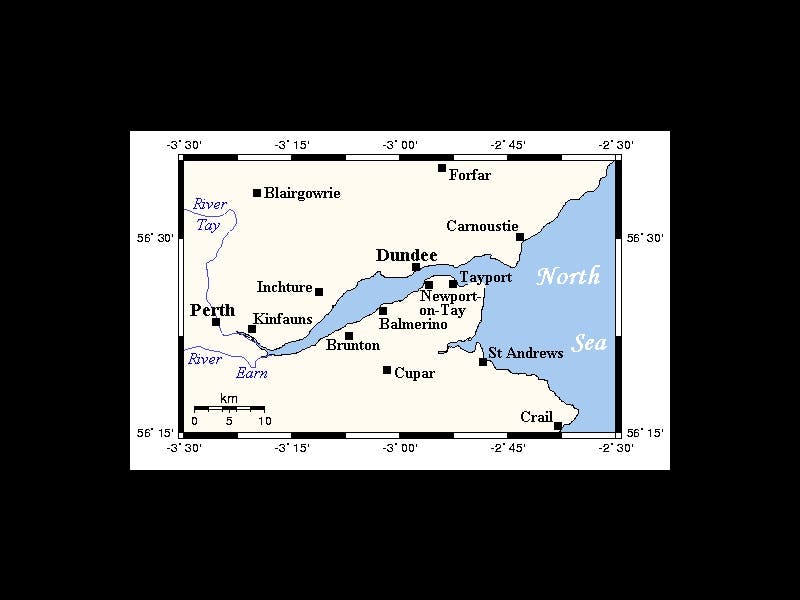Scientist of the Day - Sir Thomas Bouch
Poor Thomas Bouch, a Scottish engineer, died Oct. 30, 1880, just about a year too late. Bouch was a civil engineer who designed railroads and bridges, and in 1878, he opened the Tay Bridge over the Firth of Tay in Scotland. The bridge was quite impressive in its swing across the strait, as we see in the first image above (the bridge is not really split-level, it just converts from a deck truss to a through truss in the center, to provide clearance for shipping lanes). For the Americans in the audience, the second image provides a map of the firth—the bridge crossed at Dundee. Queen Victoria took the train across the firth in June, 1879, and she was so impressed she turned Mr. Bouch into Sir Thomas, almost on the spot. That, we surmise, would have been the peak of the life of Bouch. Barely five months after being knighted, Bouch’s world came tumbling down, or rather his bridge came tumbling down. On Dec. 28, 1879, the central span of the Tay bridge collapsed during an intense storm. As if that were not bad enough, there was a train on the central span at the time, which fell into the firth, and approximately 75 people died. It was the worst structural disaster in British history (and still is). The third image shows a contemporary wood engraving of the scene immediately after the collapse, from the Illustrated London News.
The official enquiry revealed that the cast iron beams and girders were carelessly made, and that the design failed to properly accommodate the high winds in the area. Their conclusion was that the bridge was “badly designed, badly built, and badly maintained”, and they laid the blame directly at the feet of Sir Thomas. Bouch had just won the contract for the Firth of Forth Bridge, to be started the next year, and that was pulled and awarded to another firm (whose bridge still stands). As if the shame was too much to bear, Bouch died less than a year later. A replacement bridge was begun immediately and opened in 1887; it is still standing, and still in regular use.
Dr. William B. Ashworth, Jr., Consultant for the History of Science, Linda Hall Library and Associate Professor, Department of History, University of Missouri-Kansas City









